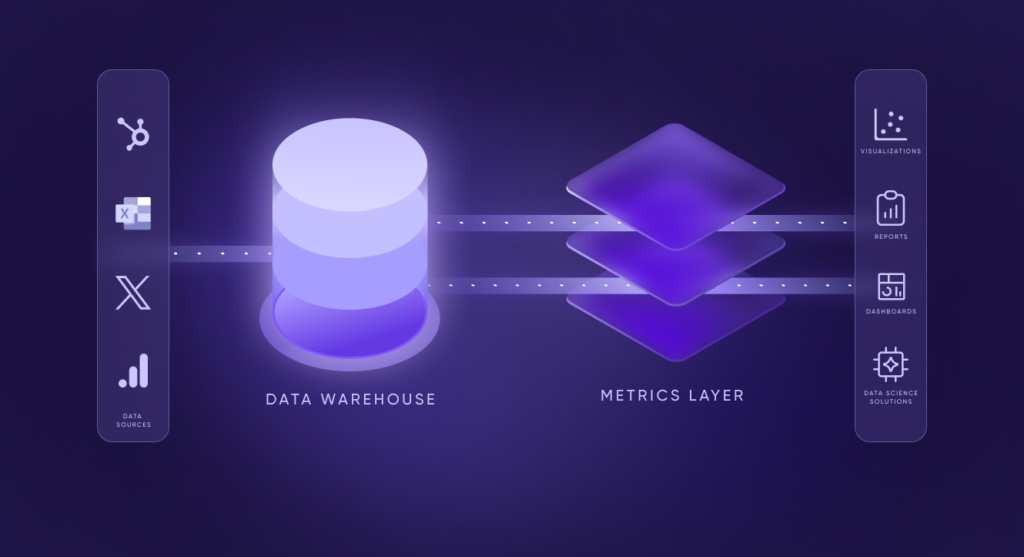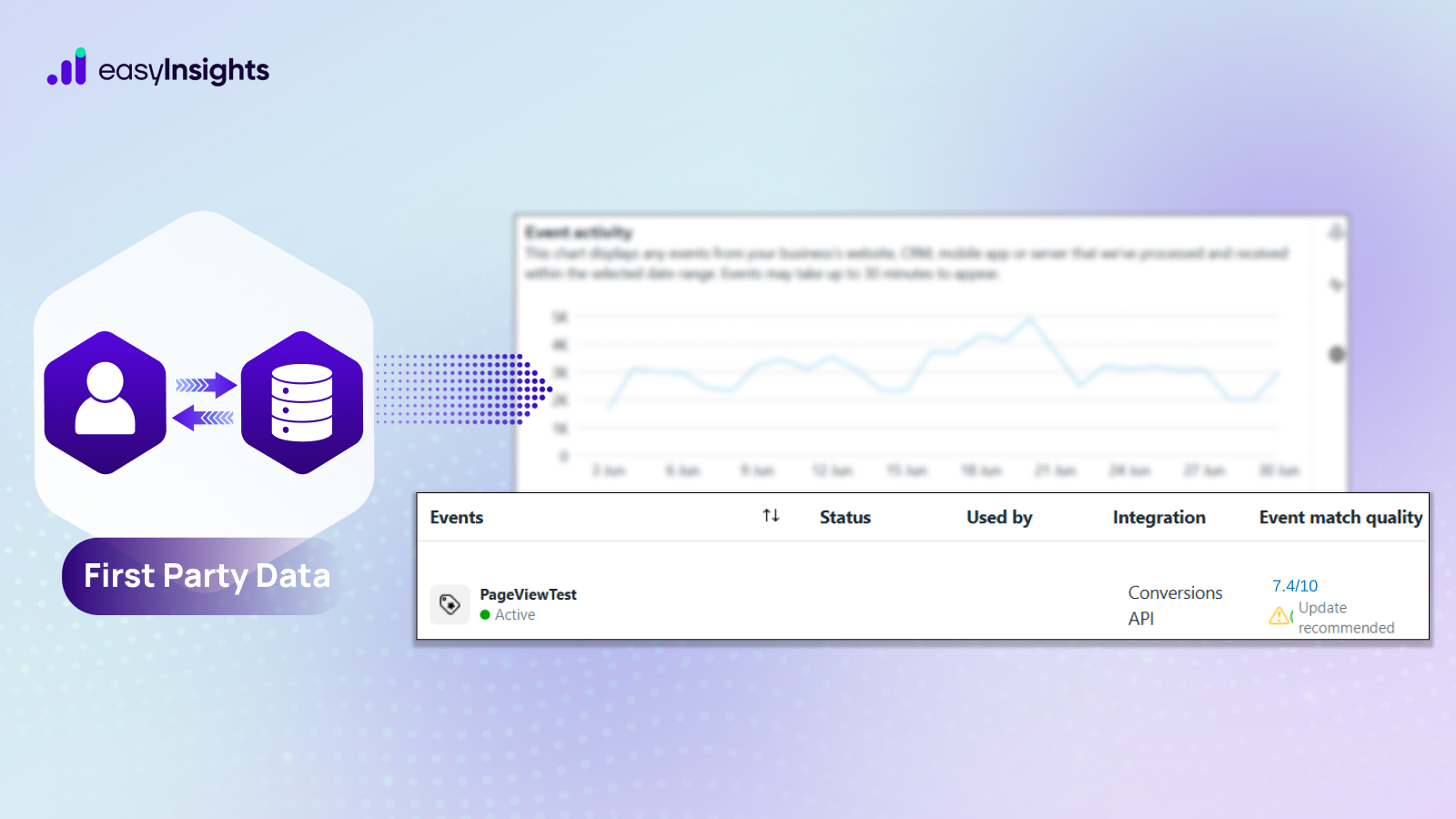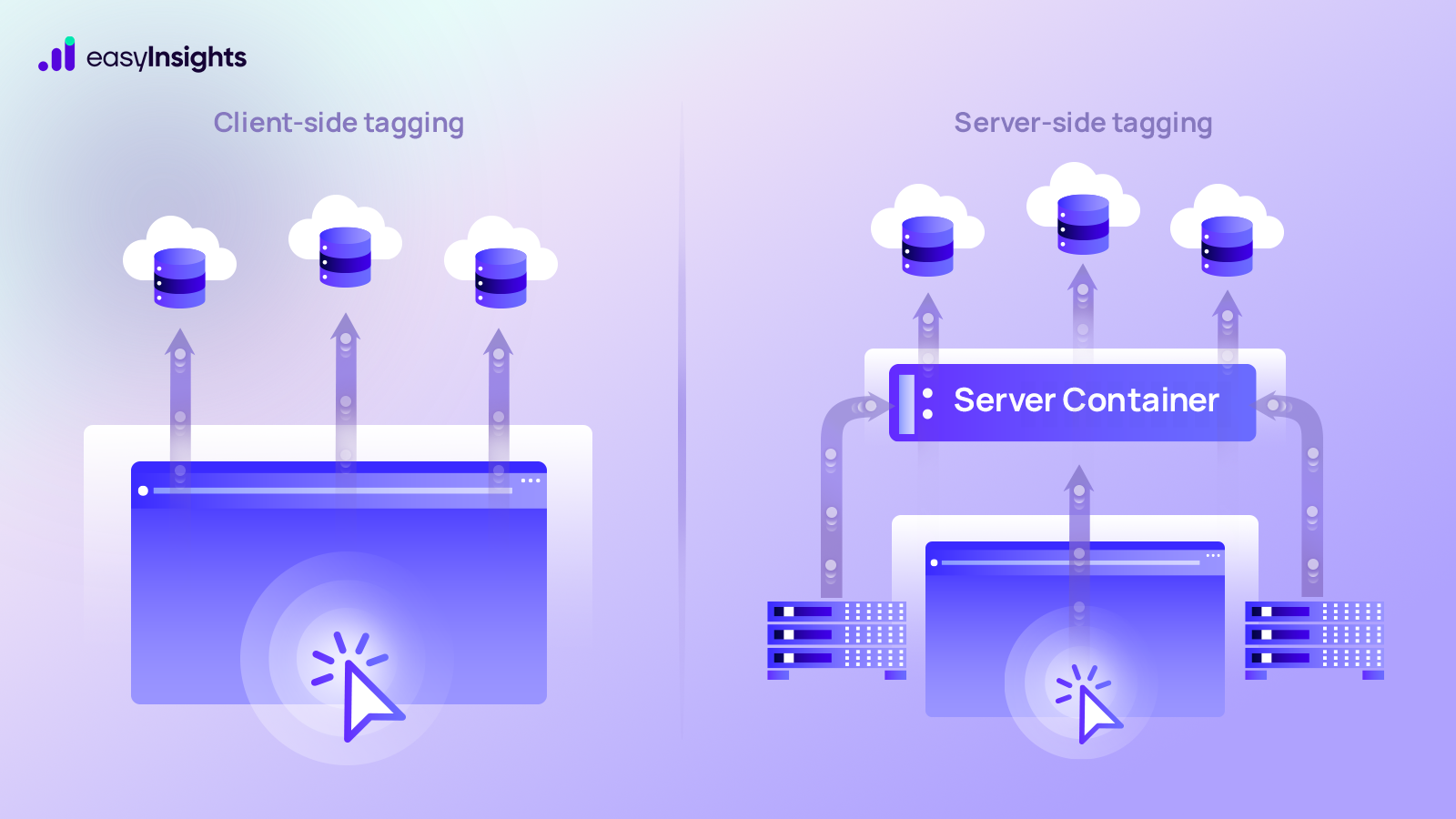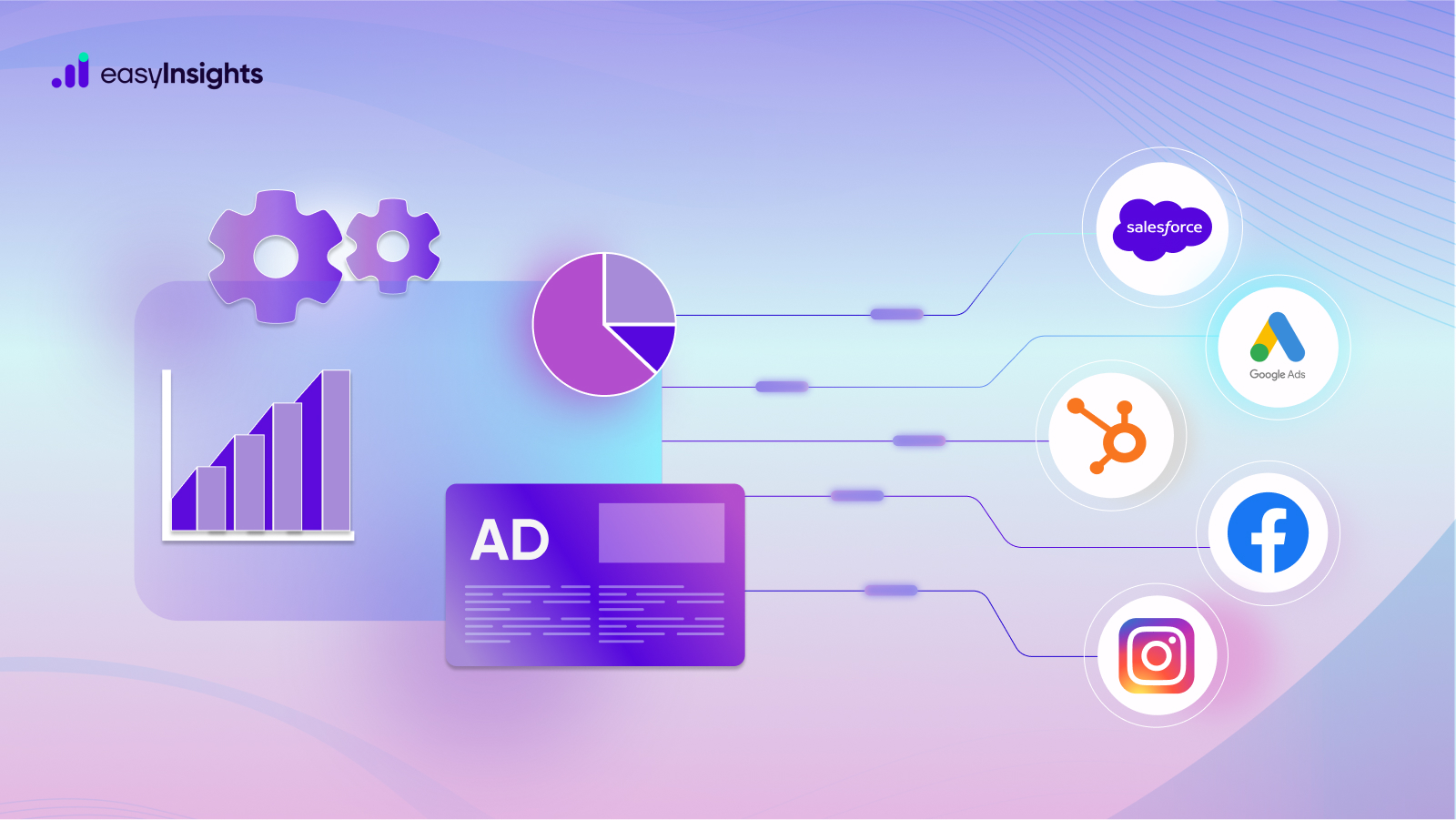
As a marketer operating in the digital age, you’re not running your campaigns on a single platform but a variety of them. After all, you need to get the attention of your target market, and what better way to do it than to leverage all the platforms where they’re active? That said, comparing metrics from different platforms is tricky, at the very least. Especially considering the same metric might have differing definitions with platforms. And so, your immediate need is a metric layer.
Here, we discuss what this is, why you should be considering it, and, most importantly, how you can start leveraging it right away!
Jump ahead to:
What is a Metric Layer?
A metrics layer is a framework that brings uniformity to your metrics and ensures consistency in data interpretation. It helps organizations create a single source of truth by centralizing how they calculate and define KPIs. As part of your data flow, the metrics layer calculates metrics from varying sources on the basis of standardized definitions. This facilitates comparison between metrics from all platforms.

The point behind implementing a metrics layer is to define all metrics uniformly across platforms so that all your metrics require the same calculation. A metrics layer has three main components. These are:
1. Data Model
A data model organizes and categorizes all data in a format that aligns with your overall business goals and objectives. It is an essential component because a business collects a variety of data, be it transactional, behavioral, or any other data., and a model lets you structure them based on their intended analytical use.
2. Transformations
Various sources generate data in their unique formats and structures. Also, it may have gaps and errors. That’s where the transformation component comes in. Transformation involves converting, cleaning, and structuring raw data into a uniform and more insight-friendly format.
3. Business Logic
A metrics layer doesn’t stop at cleaning the raw data but also ensures the data is understood in a uniform way. By this, we mean that the last component of a metrics layer refers to the principles that guide how data must be interpreted. By specifying this, organizations ensure a clear and unambiguous understanding of all data across departments.
Additional Read: What are Data Silos and Why are they Bad?
Importance of a Metric Layer
You might think- okay, a metrics layer brings in uniformity, that’s good. But we can work without it. If that’s the case, think again. A metrics layer is important today, considering the volume of data and the importance of data-backed decisions. Not having a metrics layer and compromising your data analysis means:
- Poor visibility and sub-par decision-making due to incorrect data comparisons between various marketing platforms.
- Gives rise to distrust in data, prompting marketers to question data-driven decisions that could further marketing goals.
- Increases chances of inefficiency and human error if data must be cleaned manually.
Advantages of Implementing a Metric Layer
There’s no denying that a metrics layer facilitates operational efficiency by improving the management of data. Here are some of the benefits of implementing it into your data flow.
1. Facilitates Uniformity
The biggest merit of implementing a metrics layer is bringing consistency to your data. Being collected from various sources, raw data needs to be cleaned and transformed into a format that allows comparison and easy insight extraction. A metrics layer ensures raw data goes through a set processing routine each time and the results are always accurate and reliable.
2. Manages Data Volume Fluctuations Efficiently
Your data analysis needs are dynamic. You must analyze voluminous data one day and a relatively miniscule amount another day. A metrics layer manages these fluctuations effectively without compromising your data’s integrity or the speed of data analysis. Thus, your metrics layer will not lag behind as your data needs grow and evolve.
3. Facilitates Data Adaptability
A metric that is important today might lose significance tomorrow. And so, you need to have a system that can accommodate these changes in trends and work around them. You get this flexibility with a metrics layer. By allowing you to decide and reconfigure how data is interpreted, it ensures your data insights always stay relevant with the times. This also allows your data-driven decisions to never be outdated.
4. Ensures Quick and Accurate Data Analysis
A metrics layer ensures you get the most out of your data analysis by facilitating a standardized and centralized single source of truth. How? By removing ambiguity in metric definitions and eliminating the chances of human error. Now, your team can extract data from various marketing platforms and compare them to gain a full and accurate picture of your campaign’s performance.
Additional Read: Why is Data Maturity Important?
Challenges Faced During Implementation of a Metric Layer
Once you implement a metrics layer, your organization will be able to compare data from a single dataset, keeping everyone on the same page. However, there are certain challenges you must tackle when implementing a metrics layer. These include:
1. Inadequately Skilled Human Resource
You must educate your team in data management and analysis to ensure everyone working with the metrics layer is well-versed in optimally leveraging it. To achieve this, you can first analyze the data literacy of your team and then plan a training module that brings them up to speed. An in-house data specialist or an external consultant can conduct this.
2. Anomalies In Data
When working with marketing data, you might come across metrics where you can’t have a standard definition. This could be because you need more granular data to make calculations or because of differing views within the meaning of a metric. At such times, you’ll have to format how you procure data from your database in a way that reflects and highlights the differences in meaning of the metric.
3. Find a Balance Between Data Granularity and Efficiency
Data management platforms usually employ a pay-per-process model where the cost is determined based on the amount of data you feed it. At such times, data teams must choose between flexibility and granularity. This will help ensure you get your money’s worth without hurting your pocket.
The Process of Implementing a Metric Layer
Implementing a metrics layer requires a step-by-step approach to help you ensure you start strong and that your metrics layer faces no snags or obstacles along the way. Here is your roadmap to implementing a metric layer efficiently.
1. Assess Your Current Data Landscape
The first step requires you to analyze your current data management process. It’s imperative to have a complete understanding of your existing situation before going into introducing the metrics layer. As part of this step, you need to:
- Identify your data sources, such as email marketing platforms, CRM systems, spreadsheets, and the like.
- Conduct a quality check on your data to weed out outdated, repetitive, or inaccurate data.
- Analyze and identify metrics that are essential to your marketing objectives. Doing this ensures your metrics layer is aligned with your big-picture goals.
- Examine your existing reporting process and determine which areas work optimally and require a closer look.
- Get the opinions of stakeholders, such as the marketing team and data analysts, regarding their ideas, challenges, goals, and suggestions.
2. Plan The Structure of Your Data Models
This is the step where you plan the structure of your data models within the metric layer. What makes it one of the most important steps is the fact that it will determine how your data flows once the metrics layer is introduced. Here’s how you can go about it.
- Visualize your data flow by specifying how your data will be collected, transformed, and reported to recognize possible hiccups down the road.
- Determine the format of your data, such as tables, databases, etc.
- Work out how your data will be transformed to maximize accuracy and consistency.
- Specify your feedback process to ensure users are able to flag anomalies effectively.
3. Implement The Plan
All the plans that you laid down in the previous step will be put into action here. And so, this step requires you to configure your metrics layer according to your intended data structure.
4. Test Your Metric Layer
As is the case with every new addition to your data management processes, testing is key here as well. It helps ensure you don’t hit any snags once your metrics layer is up and running. So, feed your system sample data and examine the output. If you notice any data inaccuracies or other issues, you can address them before running actual sensitive data through it.
5. Integrate Your Metric Layer
Once you’re satisfied that your metrics layer is functioning optimally, you can go ahead and integrate it with your current data systems. This step requires you to confirm that your metrics layer is able to work in tandem with your existing data tools and platforms.
6. Conduct Regular Maintenance
Your work doesn’t end at implementing your metrics layer. Once in place, you need to maintain your metrics layer and keep it up-to-date with your dynamic marketing goals and needs. Other than that, regular checks will also ensure that you identify and address any hindrances before they cost your data analysis process.
Additional Read: Data Democratization: Everything You Need to Know
Is there a Right Time to Implement a Metric Layer ?
There is one last consideration you need to tackle before bringing down the gavel on the decision to implement a metrics layer. This is the stage at which your metrics layer should be introduced in your data flow.
You see, this will essentially decide how much control you have over your data. Implementing it early in your data pipeline means less control over your data because the metrics layer would have transformed the raw data early on.
Alternatively, introducing the metrics layer later in the data flow would mean having more control over less data.
This decision depends greatly on your intention regarding the data. For instance, introducing a metrics layer later is better for marketers who want flexibility in data management. But it will come at the price of having to access the data in its raw form before the metrics layer has had a chance to clean and transform it.
Manage Your Metric Layer with EasyInsights
A metrics layer facilitates improved data management by ensuring large volumes of data’s scalability, consistency, and flexibility. But as important as it is, you also need a data analytics platform to help you easily manage your metrics layer. And that’s where EasyInsights comes in. This no-code, user-friendly data intelligence tool automates data collection, cleaning, transformation, and visualization. You can collect data from over 50 sources and ship it to any BI tool to extract valuable insights.
So, get the most out of your marketing data by implementing a metrics layer and partnering with EasyInsights.
To know more, request a demo today!
Additional Read: Improving Your Data Pipelines to Power BI using EasyInsights








